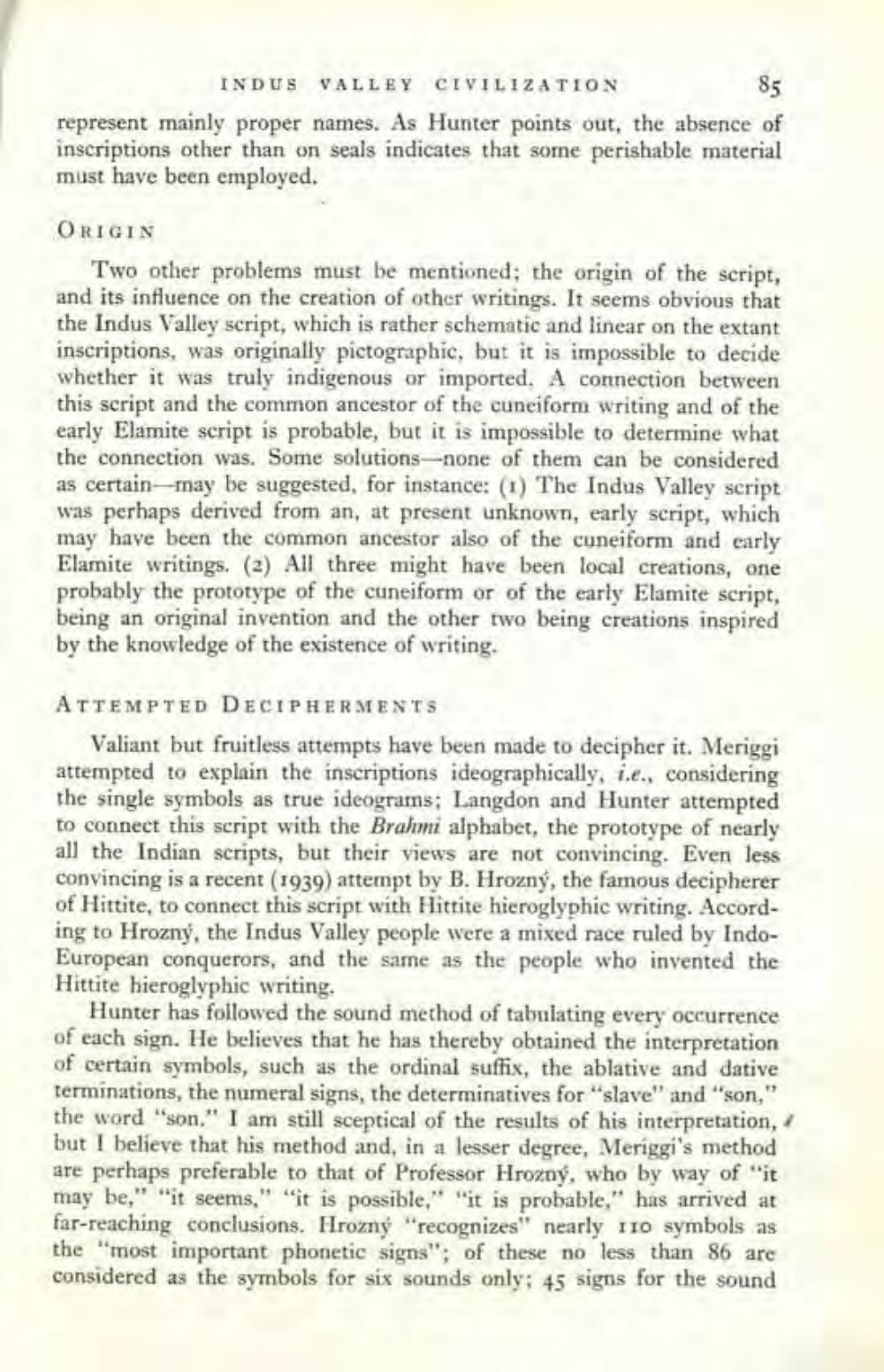________________
INDUS VALLEY CIVILIZATION represent mainly proper names. As Hunter points out, the absence of inscriptions other than on seals indicates that some perishable material must have been employed.
ORIGIN
Two other problems must be mentioned; the origin of the script, and its influence on the creation of other writings. It seems obvious that the Indus Valley script, which is rather schematic and linear on the extant inscriptions, was originally pictographic, but it is impossible to decide whether it was truly indigenous or imported. A connection between this script and the common ancestor of the cuneiform writing and of the early Elamite script is probable, but it is impossible to determine what the connection was. Some solutions-none of them can be considered as certain may be suggested, for instance: (1) The Indus Valley script was perhaps derived from an, at present unknown, early script, which may have been the common ancestor also of the cuneiform and early Elamite writings. (2) All three might have been local creations, one probably the prototype of the cuneiform or of the early Elamite script, being an original invention and the other two being creations inspired by the knowledge of the existence of writing.
ATTEMPTED DECIPHERMENTS
Valiant but fruitless attempts have been made to decipher it. Meriggi attempted to explain the inscriptions ideographically, i.e., considering the single symbols as true ideograms; Langdon and Hunter attempted to connect this script with the Brahmi alphabet, the prototype of nearly all the Indian scripts, but their views are not convincing. Even less convincing is a recent (1939) attempt by B. Hrozný, the famous decipherer of Hittite, to connect this script with Hittite hieroglyphic writing. According to Hrozný, the Indus Valley people were a mixed race ruled by IndoEuropean conquerors, and the same as the people who invented the Hittite hieroglyphic writing.
Hunter has followed the sound method of tabulating every occurrence of each sign. He believes that he has thereby obtained the interpretation of certain symbols, such as the ordinal suffix, the ablative and dative terminations, the numeral signs, the determinatives for "slave" and "son," the word "son," I am still sceptical of the results of his interpretation, but I believe that his method and, in a lesser degree, Meriggi's method are perhaps preferable to that of Professor Hrozny, who by way of "it may be," "it seems," "it is possible," "it is probable," has arrived at far-reaching conclusions. Hrozny "recognizes" nearly 110 symbols as the "most important phonetic signs"; of these no less than 86 are considered as the symbols for six sounds only: 45 signs for the sound




